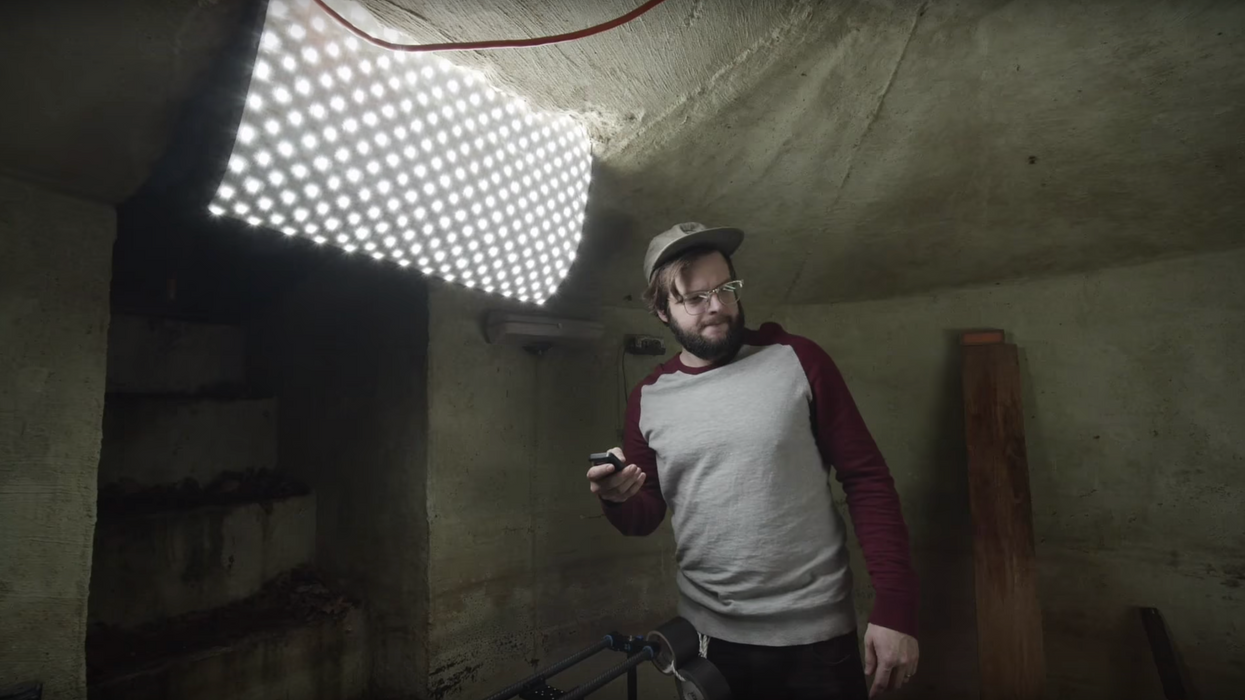What You Need to Know about Lighting in Small Spaces
No space? No problem. You can still light your shots like a pro.

Ah, space; it's so lovely. Not like...the celestial kind of space, but the kind we occupy...physically. I mean, they're both lovely, don't get me wrong, but...
And for filmmakers, space is especially lovely. We take up so much of it with our friggin' ginormous gear bags, flags as big as my garage door, and tripods with the square footage of a brontosaurus' foot. (For all the jokers who want to tell me that the brontosaurus was misclassified and isn't real, kindly click here.) And lighting takes up so much of that space, man...most of it, actually. So, what are you supposed to do when you have to shoot somewhere that doesn't have enough of it to fit your lights?
In this video, Todd Blankenship of Shutterstock shares a bunch of helpful tips on how to light in small spaces, from hiding lighting units in plain sight, hiding them, like, for real, and how to maintain control when access isn't all that easy.
Use Practical Lighting
One good way to light in small spaces is to use plenty of practicals. These are lights that will actually be in the frame, like a desk lamp, or...some other kinds of lamps. There are a few main reasons why using practicals is a smart idea:
- They don't take up any additional space out of frame.
- They provide your shot with light.
- They make your shot more interesting.
Practicals are essential for shooting and lighting in small spaces because they have a practical use as well as a stylistic one. You can zhoosh up your shot with some sweet neon signs as well as providing your subject with a backlight.
Lights That Are Easy to Hide Are Awesome
Okay, so if you're thinking, "I can't hide one of those big ass studio lights in my studio apartment. I mean, it sounds like they were pretty much meant for that, "studio" and "studio", but ironically, they're the worst for this small of a space."
I agree.
No, you're not putting those big ass studio lights in your studio apartment, friend. Even if you could smoosh a couple in there, you're gonna roast your subject like a chicken. (#DeliciousCast). You're gonna get some tiny ass LEDs and some tortilla lights, or, I guess normies call them flexible LED panels. These things are lightweight, produce little to no heat, and often cheap enough to get your hands on the units you need.
Check out our articles on budget LED lighting and then hit the mall with your girlfriends to go on an LED shopping spree. (Or order some online while eating an open-faced PB&J on the toilet or whatever.)
Make Sure You're the Light Boss
So, you've put some practicals to work, you've hidden your super cheap rollable LED panels successfully, now what? Time to crank that god complex up to Sweet Merciful Jesus and LET THERE BE LIGHT!!!!
Except, shit...how?
Well, there are a few things to think about here. First of all, in small spaces, light is going to be bouncing all over the place and in many places where you don't want it. Usually I would say "Bust out the ol' modifiers," but again, we're in a small space, can't really fit a giant slab of beadboard anywhere, right?
That's why dimmers are going to be your best friends...maybe even your lovers. When the light is too intense and you can't pull it back as you might in a large space, you can always dial down the intensity with your dimmer.
Learn more about making films in cramped spaces, including how to pull off creative compositions and how this filmmaker shot his entire feature inside a college dorm.
What are some other helpful tips for lighting in small spaces? Let us know down in the comments.
Source: Shutterstock Tutorials













